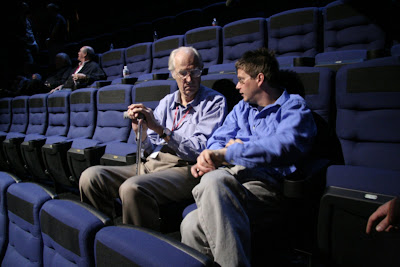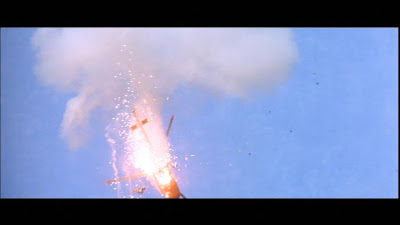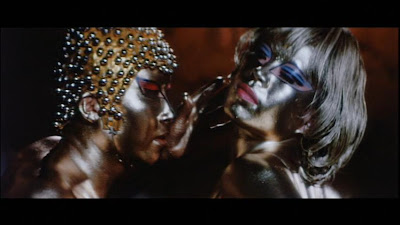Every day for 8 years and 5 months Billy Pappas worked on a single drawing. "Everything works faster than me" he quips, "except geology". It's pretty clearly an obsession for him, but is it art? Or a little slice of insanity? While the terrific documentary "Waiting For Hockney" may pose these questions, it fortunately doesn't actually try to answer them for you.
As a young artist, Pappas meets his future benefactor (a guy who dubs himself "Dr. Lifestyle") and they put their heads together to come up with something that has never been done before. They settle on creating the most detailed picture ever drawn by hand. Using magnifying glasses, special tools and an astounding process, Pappas aims for 3000 marks per square inch (in the end they believe they reached 10000) and uses the photograph of a famous person - a rather uninteresting one in my opinion - as his model. The filmmakers purposely hold off on showing the final work as they build towards the unveiling.

The unveiling itself is a curious thing...My first reaction was actually one of disappointment - it looks like any other drawing of a photo. But of course it's a difficult thing to really capture that kind of fine detail on film when looking at the picture as a whole. It's when they begin to zoom in on the different features - the peach fuzz on the cheeks, the chapped lips, the little veins in the eyes - that you begin to think "Holy crap this thing is amazing". But without that examination of the detail and understanding of the process, would anyone really notice the picture if they walked by it?
Once the drawing is finished, the next part of his plan begins: getting his drawing in front of David Hockney. If only he could show it to that titan of the art world, he surmises, he would be set. The commissions would roll in and he could make a fine living. He's based pretty much the last decade of his life on creating this one thing to bring to a single meeting with this one individual. It's a classic setup for failure and a portrait of naive dreams running into reality. And reality has a way of changing things up on you...
The movie moves along at a great clip. Using archive photos, Pappas' own sketchbook, his datebook and interviews with family, friends and others involved, it never once lags as he closes towards his ultimate goal. Especially once we meet his mother. She provides some of the film's highlights and is the emotional centre of the story. Her rambling monologue to her husband while unable to help Billy during a key section of the story is both heart-wrenching and terribly sweet. She can't bear the thought of him possibly being crushed by disappointment.

Whatever the final outcome is for Pappas' picture and his career in art, he does end up realizing he can't simply wait for it. Waiting for Hockney is one thing, but waiting for your life to start is another...













































